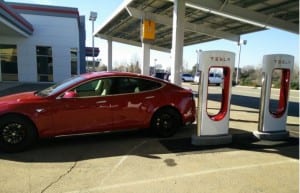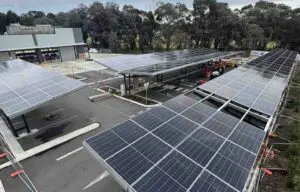 Over the weekend, we performed a test between a very fuel efficient diesel and a very energy hungry electric vehicle, charged from a diesel generator, to see which car had the best energy efficiency using diesel. Here’s what was found…
Over the weekend, we performed a test between a very fuel efficient diesel and a very energy hungry electric vehicle, charged from a diesel generator, to see which car had the best energy efficiency using diesel. Here’s what was found…
Electric cars can be charged from many sources of power generation, one of those being the reliable but no longer cost-effective diesel, good for remote and emergency situations, a favourite of regional roadhouses.
Up until now, the perceived problem with charging an electric vehicle from diesel generated electricity was the belief that it consumed more fuel than just driving a regular internal combustion engine on the same journey.
Of course, the EV critic always manages to compare a heavy Tesla to a lightweight 4 cylinder diesel car, the same critics also always appear to overlook the fact that most Australian EV drivers offset their energy use with solar power. Why wouldn’t they? It makes economic sense.
The best way to put this claim to the test is compare a very fuel efficient turbo diesel 5 seat sedan against one of the most energy hungry EVs around, charged from a 30Kva diesel generator over the same roads at the same time.
Our test turbo diesel was a Volvo D4, weighing 1500kg with a claimed fuel consumption of 4.9 litres per 100km. This car has less weight and power than a Tesla, but that’s the whole point – play by the EV critics rules.
The Electric vehicle tested was a Tesla Model S P85D: a dual motor, high powered, 2200kg barge, apparently a very energy hungry vehicle. This particular car is normally charged from solar power, but has the versatility to charge from any power source.
Step one in the experiment was to charge the Tesla direct from the gen-set using a 3 phase power lead, making sure the tank was completely filled before and after charging, and the fuel replaced measured as accurately as possible. Enough energy was added to the car’s battery pack to cover the equivalent of at least 100km.
Step two was to top up the Volvo with fuel. This was a very slow and difficult process due to the anti-siphoning trap door. It was critical at this point to get the fuel level perfect.
Step 3 was for both cars to depart as soon as possible, driving the same route and traffic conditions for a minimum of 100km. The plan was for a mixture of highway and suburban driving with air-conditioners in use. Once the 100km mark was passed, both cars returned to the starting point.
Step 4 was to refill the Volvo to the exact same fill level as before departure. This was easier said than done, and took much patience and steady hands. Once this was completed and the amount of replacement fuel recorded, it was time for some calculations and cross-checking.
The result:
The Volvo is an exceptional car that recorded consumption of 4.800 litres over the 104.6km trip, that’s slightly better than the claimed fuel consumption.
The Tesla is another exceptional car; it’s also a 2200kg barge with dual electric motors that can propel it down the quarter mile in 11.6 seconds. Regardless of all that, the Tesla electric car required only 4.460 litres of diesel to cover the same 104.6kms.
The video:










